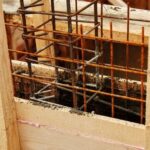Planning to renovate your home but short on funds? Wondering, ‘can you take out of your IRA for home improvement‘? If so, you’re not alone. Many homeowners consider using their Individual Retirement Accounts (IRAs) to finance home upgrades. In this article, we will explore the concept of using IRA funds for home improvements, including the benefits and drawbacks, IRS regulations, and alternative financing options.
An Individual Retirement Account (IRA) is a popular investment tool designed to help individuals save for retirement. There are different types of IRAs available, such as traditional IRAs and Roth IRAs, each with its own set of rules and tax implications. While the primary purpose of an IRA is to provide financial security during retirement, some individuals also explore the option of using their IRA funds for more immediate needs, such as home improvements.
Home improvement expenses can range from major renovations and repairs to energy-efficient upgrades. Many homeowners find that using their IRA funds for these expenses can be a convenient way to access additional funds without resorting to high-interest loans or credit cards. However, it’s essential to understand the IRS regulations governing the use of IRA funds for non-retirement purposes and consider the potential impact on long-term savings.
Understanding IRAs
An Individual Retirement Account, or IRA, is a type of investment account that is designed to help individuals save for retirement in a tax-advantaged way. There are different types of IRAs, including traditional IRAs, Roth IRAs, SEP IRAs, and SIMPLE IRAs, each with their own unique features and eligibility requirements.
Traditional IRAs allow individuals to make contributions with pre-tax dollars, while Roth IRAs use after-tax dollars and offer tax-free withdrawals in retirement. Other types of IRAs are designed for self-employed individuals or small business owners.
The money contributed to an IRA is typically invested in stocks, bonds, mutual funds, or other assets with the goal of growing the savings over time. This growth can be tax-deferred or tax-free depending on the type of IRA. Contributions to traditional IRAs may be tax-deductible if certain criteria are met, while Roth IRA contributions are not tax-deductible.
One key feature of traditional and Roth IRAs is that they have annual contribution limits set by the IRS. For 2021 and 2022, the contribution limit for both traditional and Roth IRA accounts is $6,000 for individuals under age 50 and $7,000 for those age 50 and older. Additionally, there are income limits that determine whether an individual is eligible to contribute to a Roth IRA.
Understanding these different types of IRAs can help individuals make informed decisions about their retirement savings and how they can potentially utilize their funds for home improvements.
| IRA Type | Contribution Limit (2021-2022) |
|---|---|
| Traditional | $6,000 (under age 50) – $7,000 (age 50 and older) |
| Roth | $6,000 (under age 50) – $7,,000 (age 50 and older) |
Home Improvement Expenses
When it comes to home improvement expenses, using funds from your IRA can be a smart financial strategy. Whether you’re looking to renovate your kitchen, repair a leaky roof, or make energy-efficient upgrades, tapping into your IRA can provide the financial support you need. Here are some common home improvement expenses that may qualify for IRA withdrawals:
- Renovations: Major renovations such as adding an extra room, remodeling a bathroom or kitchen, or expanding living space can all be funded through IRA withdrawals.
- Repairs: Unexpected repairs such as fixing a broken HVAC system, repairing a damaged roof, or addressing structural issues in your home can also be covered by IRA funds.
- Energy-Efficient Upgrades: Making eco-friendly upgrades to your home, such as installing solar panels, upgrading windows and doors for better insulation, or adding energy-efficient appliances may be eligible for IRA withdrawals.
It’s important to note that while these expenses may qualify for IRA withdrawals, there are specific rules and regulations set by the IRS that must be followed. It’s advisable to consult with a financial advisor or tax professional to ensure compliance with IRS guidelines. Additionally, documentation of the home improvement expenses will be required when making withdrawals from your IRA.
IRS Regulations
Understanding the rules and regulations set by the IRS for using IRA funds for home improvements is crucial for anyone considering this option. While it can be a convenient way to finance necessary upgrades to your home, there are specific guidelines that must be followed to avoid penalties and limitations.
One key consideration is that withdrawals from a traditional IRA for home improvements may be subject to income tax, depending on the circumstances. However, first-time homebuyers may be able to withdraw up to $10,000 from their traditional or Roth IRAs without incurring the usual 10% early withdrawal penalty. This can provide some relief for those looking to make substantial improvements to a newly purchased home.
It’s important to keep in mind that there are particular qualifying expenses for using IRA funds for home improvements. These include costs related to renovations, repairs, and energy-efficient upgrades that meet certain criteria. It’s also essential to maintain detailed records of these expenses in case of an IRS audit.
| IRA Withdrawal Rules | Details |
|---|---|
| Income Tax | Potential tax implications when withdrawing from a traditional IRA |
| First-time Homebuyers | Ability for first-time homebuyers to withdraw up to $10,000 without penalty |
| Qualifying Expenses | Specific renovation, repair, and upgrade costs that qualify for IRA withdrawals |
Pros and Cons
Using funds from an IRA for home improvement purposes can have both advantages and disadvantages. One of the main advantages is that it allows individuals to invest in their property, potentially increasing its value and improving their quality of life. Home improvements funded by an IRA withdrawal can also allow homeowners to enjoy the results of their investment rather than having to wait until retirement to make necessary upgrades.
However, there are also potential drawbacks to consider. Withdrawing funds from an IRA for home improvements can result in tax implications, depending on the type of IRA (traditional or Roth) and the specific circumstances surrounding the withdrawal. Traditional IRAs may be subject to taxes upon withdrawal, while Roth IRAs typically offer tax-free withdrawals on contributions but not necessarily on earnings if certain conditions are not met.
Another potential disadvantage is the impact on retirement savings. Withdrawing funds for home improvements means reducing the amount of money available for retirement, potentially affecting long-term financial security. It’s important for individuals to carefully weigh the benefits of home improvements against the impact on their retirement savings before making a decision.
In addition, individuals should consider alternative financing options for home improvements before using funds from an IRA. Home equity loans, personal loans, or even government programs designed specifically for energy-efficient upgrades could be viable options that allow individuals to preserve their retirement savings while still addressing their home improvement needs.
Alternative Options
If you’re considering making home improvements, but don’t want to dip into your IRA, there are alternative financing options available to you. While using funds from your IRA can be a viable option for some individuals, it’s important to explore all avenues before making a decision. Here’s a look at some alternative options for financing home improvements and how they compare to using funds from your IRA.
Home Equity Loans
One popular alternative to using IRA funds for home improvements is taking out a home equity loan. This type of loan allows homeowners to borrow against the equity in their home, providing a lump sum of money that can be used for renovations or repairs.
Home equity loans typically offer competitive interest rates and may also provide potential tax benefits for the borrower. However, it’s important to consider the risks associated with a home equity loan, such as the possibility of foreclosure if repayments are not made on time.
Personal Loans
Another option for financing home improvements is taking out a personal loan. Personal loans are unsecured loans that do not require collateral, making them an attractive option for individuals who may not want to use their home as leverage.
These loans can offer flexibility in terms of repayment options and typically have fixed interest rates. However, personal loans may come with higher interest rates compared to other forms of financing and could impact the borrower’s credit score if not managed effectively.
By exploring these alternative financing options, individuals can make informed decisions about how best to fund their home improvement projects without having to rely on their IRAs. It’s essential to weigh the advantages and disadvantages of each option carefully before choosing the best course of action for your specific financial situation.
Case Studies
One example of an individual utilizing their IRA for a home improvement project involved a couple who wanted to renovate their outdated kitchen. They had been diligently contributing to their traditional IRA for many years and realized that they had accumulated a substantial amount of savings.
After doing some research, they discovered that they can use up to $10,000 from their IRA without penalty for qualified first-time homebuyer expenses, including home improvements. This option gave them the flexibility to access their retirement savings for the kitchen renovation without incurring any additional taxes or penalties.
In another case, a homeowner decided to make energy-efficient upgrades to their property using funds from their Roth IRA. They were aware that the IRS allows penalty-free withdrawals from Roth IRAs for qualified first-time homebuyer expenses, and they took advantage of this provision to finance the installation of solar panels on their roof.
By doing so, they not only improved their home’s energy efficiency but also enjoyed tax-free growth and tax-free withdrawals on the earnings from their Roth IRA investment.
Can Be a Viable Option
for those who wish to enhance their living space while tapping into their retirement savings strategically.
Tips for Using IRA Funds
In conclusion, using funds from your IRA for home improvements is a decision that requires careful consideration and planning. While it can provide a source of financing for essential renovations or upgrades, there are important factors to take into account before making this choice.
First, it’s crucial to understand the IRS regulations regarding IRA withdrawals for home improvement purposes. By familiarizing yourself with the rules and potential penalties, you can avoid running into unexpected complications down the line. Additionally, consulting a financial advisor can provide valuable insight and guidance on how to navigate this process effectively.
Furthermore, it’s essential to weigh the pros and cons of using IRA funds for home improvements. On one hand, accessing these funds can offer financial flexibility for necessary projects. On the other hand, there may be tax implications and potential impacts on your retirement savings that need to be carefully evaluated.
Ultimately, individuals considering tapping into their IRAs for home improvements should also explore alternative financing options and compare them with using IRA funds. By thoroughly assessing all available resources and seeking professional advice as needed, homeowners can make well-informed decisions that align with their financial goals and long-term plans.
Frequently Asked Questions
Can I Take Money Out of My IRA for Home Repairs?
Yes, you can take money out of your IRA for home repairs under certain circumstances. The IRS allows penalty-free withdrawals of up to $10,000 for first-time homebuyers or for qualified higher education expenses.
Can You Use Retirement Funds for Home Improvements?
Yes, you can use retirement funds for home improvements, but it’s important to consider the potential tax implications and penalties. Certain conditions, such as being a first-time homebuyer or using the funds for qualified expenses, may allow penalty-free withdrawals from your IRA.
How Can I Borrow From My IRA Without Penalty?
You can borrow from your IRA without penalty by utilizing the 60-day rollover rule. This allows you to withdraw funds from one IRA and redeposit them into another IRA within 60 days to avoid early withdrawal penalties. However, this should be done cautiously to avoid taxes and penalties.

I’m thrilled to have you here as a part of the Remodeling Top community. This is where my journey as an architect and remodeling enthusiast intersects with your passion for transforming houses into dream homes.





